Content
Spirulina is a blue-green alga that is widely used as a weight loss and energy supplement due to its beneficial properties. Growing spirulina at home is very simple and realistic. This will require a large but flat aquarium for the algae to have enough sunlight. There is also a water heater, and of course the spirulina itself, which can be ordered via the Internet.
The temperature required for the growth and reproduction of spirulina is 36-38C, with the alkalinity of water about 8-10.
Filtered water, purified from any impurities, is suitable before use. For spirulina, sunlight is very important when growing, but not prima, but partial shade so that microorganisms do not die. It is not recommended to expose the aquarium to hot sun rays in summer. Water should be mixed periodically, 2-4 times a day. For this, a sterile glass rod is used. When stirring, you need to be very careful so as not to harm the algae, stir very slowly.
When the water is completely green, you need to harvest the spirulina. To do this, you need to drain and pass through the filter half of the suspension. the spirulina itself should remain on the filter, and clean water will flow down. Then add clean water to the aquarium and add the necessary chemicals.
Video about a scientist who grows spirulina at home.
Live spirulina is considered the healthiest. It can be smeared on a pastry, eaten with a spoon, or added to a cocktail. For long-term storage of spirulina, you can place it in the freezer after dividing it into equal portions for convenience.
Beneficial features
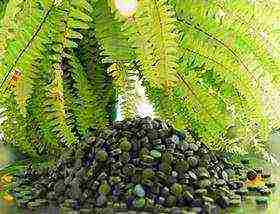
This alga contains a lot of nutrients, active substances such as zinc, chlorine, iodine, iron, manganese, copper, chromium, cobalt, nitrogen, phosphorus, sulfur, vitamins B12, B1, B2, B6 and many others. The digestibility of all the elements contained in spirulina exceeds 95%. This speaks of its high value.
This small plant, packed with trace elements and vitamins, is able to provide nutrition to the entire body. Spirulina can be dried, if desired, outdoors, but not in direct sunlight, to avoid loss of trace minerals.
The best place to dry is polyester, it absorbs moisture well. The result is a dark green dried algae. It is recommended to take small amounts of spirulina every day, absolutely for everyone. For healthy people, a sufficient amount will be 7-10 g, for healthy people, from 1 to 4 g per day.
Spirulina growing module
The setup and methods described here are primarily intended for testing, demonstration, and training purposes. However, they can provide a steady production of 40 grams of dry spirulina per day (enough to provide a nutritional supplement for 10-20 children). We strive to show that satisfactory results can be achieved at very low cost (aquarium pump, small amount of initial culture, etc.).
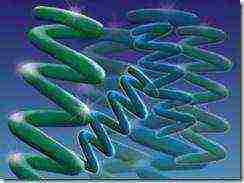
1. The main factors affecting the growth of spirulina
1.1 Nutrient medium
The liquid used to make spirulina is a solution of mineral salts in water. This liquid should provide spirulina with all the chemicals it needs. The PH factor of the culture medium (that is, its alkalinity level) should be between 8 and 11. There are various recipes for the culture medium of spirulina. The one shown here is one of the simplest, but not the cheapest.
Table # 1
Table 2

1.2 Temperature
The temperature of the culture medium has a direct effect on the growth rate of spirulina. This alga is quite resistant to temperatures down to 3-5 ° C above zero. It starts to grow noticeably above 20 ° C. And at 35-37 ° C it reaches its maximum. If this temperature is exceeded, the crop may die from overheating. And after a few hours at temperatures above 43-44 ° C, all spirulina can die. Note that sudden changes in temperature will reduce yields.
1.3 Light
Very strong light (direct sunlight) can be dangerous under the following circumstances:
With a cold culture (below 14-15 ° C), especially with a sudden sharp increase in illumination;
· In a very warm culture, due to the possibility of overheating;
· With a very dissolved culture (transparency is more than 6 cm);
When the culture is recovering (after overheating).
If any of the above happens, you need to worry about shading the pool.
On the other hand, when the concentration and temperature conditions are optimal, the spirulina should be grown in open sunlight.
1.4 Stirring
It is very important, at least from time to time (2-4 times a day), to stir the spirulina. Excessive stirring may damage the spirulina (fragments visible under the microscope) and cause foam to form. Certain types of centrifugal pumps, as well as splashing falling water, are particularly harmful. The module proposed here provides continuous agitation of the culture using an aquarium electric pump. For small culture volumes (less than 100 liters), a small aquarium compressor can be used to mix the culture with air bubbles. The latter method is very convenient for maintaining a reserve culture.
2. Description of the module
2.1 Equipment
A jar of live spirulina;
Covered swimming pool with a total surface of 4 m2, consisting of:
- 2 sheets of 0.2mm polyethylene
- 4 semicircular arcs
- 3 poles 4 m long
- boards or bricks for building walls.
Electric aquarium pump 220V 5-7 W (for mixing and harvesting);
1000 liters of culture medium (water, fertilizers and mineral salts according to the recipe used).
A special measuring ruler with a glued white patch at the beginning, litmus paper to measure the pH, a thermometer.
Harvesting filter.
Possibly: extruder and dryer with removable trays.
Small aquarium air compressor 220V 5W.

2.2 Covered pool arrangement
The selected area should be an open flat area (or slightly shaded if the climate is very hot), measuring 2 m by 8 m. The pool should be built according to the drawings, using bricks, cinder blocks, planks, adobe or any other material. If termites are present, a minimum of a centimeter layer of ash must be placed under the film. If there are rodents, it is necessary to put a sufficiently fine metal mesh or sheet metal under the film. It is sensible, but not necessary, to use a double film, especially if its thickness is less than 0.2. In all cases, the pool surface must be carefully leveled before laying the film.
The arcs supporting the clear pond cover can be made of 6-8mm iron rods or bamboo. Arcs can be triangular or semicircular. The clear cover (agricultural polyethylene, ANTI-UV if possible) must be fixed on three sides with earth or stones. One long side is left free to allow access to culture.



3. Preparation of the culture medium
The water used should be potable and, if possible, low in calcium (less than 100 mg calcium per liter). Slightly salty water can also be used (up to 4-5 g / liter NaCl, then salt should be omitted in the recipe).According to Table 1, you can determine the required amount of substances to prepare the required amount of nutrient medium.
Important: ammonium nitrate cannot be used here!
The substances indicated in parentheses are not necessary, at least initially or depending on the quality of the water used. For example, calcium chloride (or lime) must be added if very soft water is used (less than 10 mg calcium per liter). Water that is even moderately rich in sulphate (more than 20 mg / liter) makes it possible to eliminate potassium sulphate, provided that potassium nitrate is used as indicated (if sodium nitrate is used, potassium sulphate becomes important for its potassium).
The addition of green tea prevents iron deposition (purplish coloration is normal after diluting the iron salts with tea).
Dissolve ferrous sulfate in a glass of water before adding it to the solution; then add magnesium sulfate, which should be dissolved in a little water beforehand. This solution can be stored for several days before using it (in this case, it must be stored away from light).
4. Volume expansion and growth control
4.1 Measurement of Spirulina Culture Concentration
The concentration of a culture can be measured by the intensity of its color, for this a ruler is used, at the beginning of which a small white disc is attached perpendicularly. This instrument is immersed in water until the disc is no longer visible. The immersion depth of the disc is read off the ruler. The culture is dissolved if the disc remains visible at a depth of 5-6 cm; a depth of 2-3 cm shows a crop ready for production. A depth of less than 2 cm indicates that the crop must be dissolved or it is time to harvest. In good conditions, spirulina doubles every 2-4 days until it reaches its maximum concentration (clarity
Spirulina naturally grows in lakes with alkaline water. This water inhibits the growth of other microorganisms. The microalgae grows very quickly on the surface of the lake. This growth continues until the spirulina layer becomes so dense that it ceases to transmit light. But it is he who is so necessary for her growth.
For mass cultivation of spirulina, scientists investigated the conditions of growth, nutrition and growth for growing it on an industrial scale.
Spirulina is produced and consumed in more than 60 countries of the world: in Mexico, USA; Thailand; Japan; Taiwan; India, China, Russia, Ukraine, etc.
Where possible due to environmental and climatic conditions, growing spirulina takes place in open water. Open-type installations are used in Bulgaria, Italy, Israel, Mexico, Chile, Brazil, Thailand, India, China, USA (California), Central Asia, Kazakhstan.
In countries with a temperate climate, preference is given to the cultivation of microalgae in greenhouses. In Japan, spirulina is grown in greenhouses on an area of 10 thousand hectares, in Italy - 2.5 thousand hectares, in France - 3 thousand hectares, in the Netherlands - 1 thousand hectares, in Ukraine - 12 hectares, Moldova - 0.1 ha.
Greenhouses for industrial cultivation of spirulina with photosynthetic blocks are located as close as possible to heat and sun. Photoblocks are filled with a nutrient medium of a strictly defined composition, repeating the composition of the water of Lake Chad. Usually, in this case, the purest artesian water is used from great depths, the optimal illumination and temperature of the nutrient medium are set at 26-28 ° C.
The grown spirulina is washed, filtered and dried at temperatures up to 65 ° C. At this temperature, it does not lose its valuable properties for a long time, it is easily transported.
The advantage of the closed type of spirulina cultivation over the open type is the ability to preserve pure cultures, high productivity of algae strains, and production automation.
Spirulina contains a balanced composition of proteins, carbohydrates, vitamins, amino acids, micro and macro elements, about 50 fatty acids. At the same time, spirulina contains only 5% fat and 8% cholesterol.
Huge opportunities are inherent in this microscopic plant!
Attention!
You must have complete information about the manufacturer. Nowadays, almost all spirulina used for nutrition or medicinal purposes is grown artificially. Conditions growing spirulina must comply with international standards. You can also grow it at home. But homemade spirulina does not contain enough nutrients. In addition, if not properly dried, putrefactive bacteria, mold and fungi can develop in it. And this dramatically reduces its nutritional and medicinal properties, and can also lead to poisoning. Doubt should be caused by spirulina, produced with the addition of food colors and preservatives. When purchasing, ask for the relevant quality certificates.
If you liked the article, share with your friends
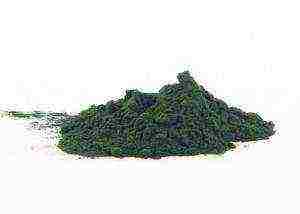
Meet the blue-green algae spirulina. What it is and what is its benefit for the human body, this article will tell.
Unhealthy food is one of the scourges of our time. Even if a person tries very hard not to eat harmful and potentially dangerous foods, he cannot afford to be sure that his food is of truly high quality. Transgenes, preservatives, pesticides ... Our diet is becoming more and more like a poison. The results are not long in coming: lowered immunity and increased fatigue are problems that even healthy people experience. We just do not have enough vitamins and minerals for a fulfilling life! “The rescue of drowning people is the work of the drowning people themselves,” say the adherents of a healthy lifestyle and grow their own food. Someone works in the beds, while others breed spirulina algae in aquariums.
What is Spirulina? It is a blue-green unicellular alga of the genus of cyanobacteria (Latin name Spirulina platensis). Due to a number of beneficial properties, it is used as an energy supplement and weight loss aid all over the world. For the peoples of Africa and Latin America, this product is traditional.
Everyone probably heard about the beneficial properties of spirulina, at least with the edge of his ear, but our people were too often deceived so that they continued to believe in advertising. Meanwhile, supplements, dry powders and frozen spirulina algae are truly the most valuable food product. No, this is not a panacea for everything and not an elixir of eternal youth, but simply a single-celled one, rich in vitamins and microelements. The very ones that we miss so much.
When talking about the benefits of spirulina, it is worth starting with this: this alga contains as much protein and iron as beef liver. Amazing indicators for a plant! Vegans and vegetarians should definitely pay attention to this circumstance: in terms of energy, this is the most complete meat substitute. There is more beta-carotene in spirulina than in carrots, and in terms of the content of B vitamins, it is the absolute leader among all foods that a person eats. In addition, like any algae, spirulina is loaded with iodine.
Spirulina is also beneficial for weight loss: thanks to its excellent digestibility and high content of phenylolanine, eating only a few grams of this wonderful seaweed, you feel full. The action of most expensive fat burning pills is based on this principle - not many people know that this is spirulina, known to mankind for centuries, helps to get rid of excess weight, and not some kind of innovation.
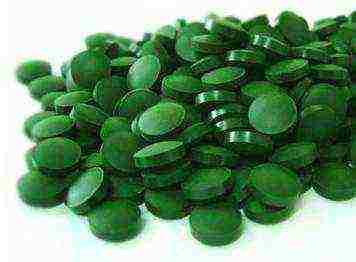 How to take spirulina?
How to take spirulina?
How to take spirulina - in the form of supplements, cocktails, dry or fresh? There is not much difference - it will do you good anyway.
Spirulina is sold in the form of tablets, capsules, powder, and also dry.The latter, they say, is very tasty - but it is not easy to find it on sale in our country. Too unconventional product. But if you are lucky enough to visit India, keep in mind that dried spirulina is sold there in the shops with spices: do not miss the chance to taste this delicacy. Vitamin cocktails are made from the powder. Out of habit, such a drink may seem somewhat ... specific. Its taste can hardly be called pleasant or unpleasant, it is simply unusual - to interrupt it, you can dilute spirulina in juice.
How to take spirulina tablets and capsules is written on the instructions for the preparation. As a rule, one or two pieces are swallowed before meals with a glass of water. Losing weight, pay attention: before eating, not instead of it. In the seventies of the last century, very serious studies of the properties of spirulina were carried out in the Soviet Union in order to find out whether it is possible to feed astronauts exclusively with it. It turned out that in general it is possible ... but such a diet is far from healthy.
A person needs a varied diet - this is how our digestive organs are arranged. In addition, there is not enough fiber in spirulina, and without it a person is doomed to constant constipation.
It may surprise you, but spirulina preparations are quite expensive in retail sale, although their cost is a penny. Single-celled algae grow and reproduce much more actively than higher plants: one pool is able to provide supplements to the whole city at minimal cost of care and maintenance. What is the reason for such extra charges? Manufacturers of homeopathy spend a lot of money on the popularization of spirulina - yet this product for our market is still new and not promoted. That is, in fact, you are overpaying for advertising. For a pretty jar. For the pharmacist's lecture on the miracle drug and his professional smile. A flawless smile is the result of whitening and lingual braces, plus a little artistry and sales experience. But this is not a guarantee of the miraculous properties of a product sold with large markups.
To avoid unnecessary expenses, as well as be able to use the miracle algae in a living, most useful form, you can start growing spirulina yourself. How it's done? We read on.
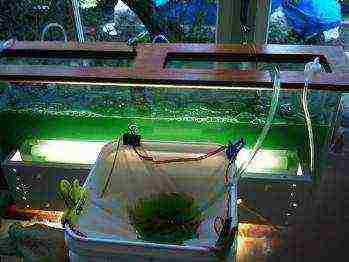 Growing spirulina at home
Growing spirulina at home
In fact, growing spirulina at home is easy. All you need is an aquarium, some fertilizers and a strain of live algae.
Since ancient times, Africans living near Lake Chad collected mud along the banks, made cakes from it, which they dried in the sun and ate, replacing meat with them. After all, the beast must either be killed on the hunt (which is dangerous), or raised (which is long and difficult) - and you can eat spirulina and fruits from trees without making any effort. Therefore, the black brothers of vegans live to a ripe old age, which is not typical for the rest of the peoples of Africa. Either because they do not overwork and do not risk themselves, or because of the healing properties of spirulina. From the representatives of this African people in the middle of the twentieth century, European researchers learned about the miracle algae, studied it in more detail - and also wanted to grow it. All spirulina that is on the modern market is not caught in natural reservoirs, but is cultivated in special nurseries.
We will not collect ooze either. Growing spirulina at home is real for everyone. You just need to get an aquarium and some chemicals ... and of course, a live strain of spirulina. But this is just the most difficult thing - after all, it is sold either dried or frozen, in other words, already dead.
There are two ways to get what you want: search by acquaintances - suddenly someone also grows a miracle algae (the chances of success increase if there are vegans and healthy people among your friends), or by advertisements on the Internet.
The aquarium should be large, but flat - 2-3 cm in thickness, so that the algae have enough sunlight.Of course, you will have to buy it on order. We purchase a water heater at a pet store.
The temperature at which spirulina actively grows and multiplies is 35-37 degrees. The alkalinity of the water is 8-11. Before use, it is better to filter the water through a household filter to clear it of unnecessary impurities. Then we add the following ingredients:
(sorry, I didn't find a table in Russian - but for readers who know at least minimal English or know how to use a dictionary, it won't be difficult to translate on their own)
Spirulina is a plant, so it definitely needs sunlight. But not straight, but partial shade, otherwise microorganisms will die. It is especially dangerous to expose the aquarium to direct sunlight in summer, when its intensity is at its maximum. Equip your mini farm with a gauze or mosquito net screen.
Stir the water in the aquarium 2-4 times a day. Use a sterile glass rod for this. Be extremely careful: in order not to damage the algae, move your stick through the water slowly and slowly.
The greener the water, the more spirulina it contains. When the liquid is almost cloudy, it's time to harvest. We drain about half of the suspension and pass it through a filter - two layers of polyester fabric stretched over the can: pure water will flow down, and a green gruel will remain on the matter. Add clean water to the aquarium and add the necessary chemicals.
The most useful spirulina is live. Eat it with a spoon, spread it on a sandwich, add it to cocktails, treat your household ... The leftovers need to be put into the refrigerator if you plan to finish eating them in the next two days. For longer storage, we put the crop in the freezer, having previously divided it into portions for convenience. 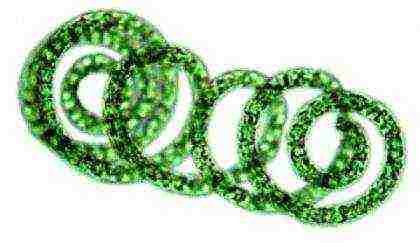
Anyone who cares about their health will find it useful to learn more about another algae - kelp. Read about it in another article of mine:
What are the benefits of seaweed?


